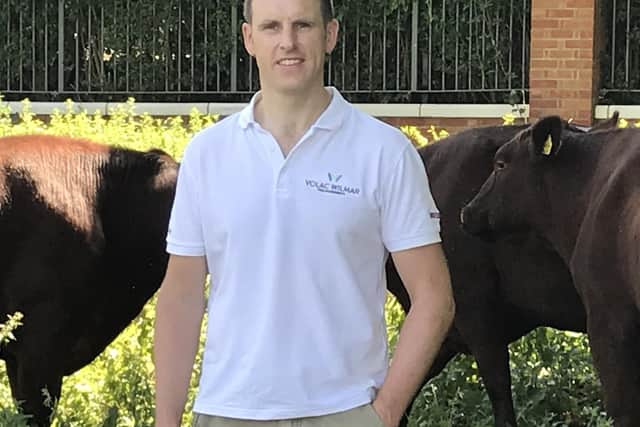A sustainable future for palm
and live on Freeview channel 276
Valued for its unique melting point, mixability and low odour, it has become one of the top global edible oils by consumption since the palm oil boom of the early 1990s, says Catherine Barton, Policy Lead on Deforestation-Free Commodities and Regenerative Agriculture for Chester Zoo.
“Palm is incredibly versatile and allows for manufacturing methods, product properties and extended shelf life that otherwise would not be possible if replaced with a different ingredient,” explains Ms Barton.
Advertisement
Advertisement
In on-farm dairy production this goes a step further, with palm oil fractions used in the manufacture of many types of rumen-protected fat supplements as highly energy-dense ingredients with unique fatty acid profiles. These supplements are targeted to improve various aspects of dairy production including milk yield, milk fat production and cow fertility, says Dr Richard Kirkland, Global Technical Manager and nutritionist for Volac Wilmar Feed Ingredients (VWFI).


High value energy input
These rumen-protected feed fat supplements are tremendously valuable because they deliver an energy concentration around 2.5-times that of cereals without disrupting rumen function as is the risk with liquid oil sources. Recent research has demonstrated contrasting nutritional effects of palmitic (C16:0) and oleic (C18:1), the two major fatty acids in palm oil, when supplemented to dairy rations.
“Palm-based fat supplements help to optimise rumen conditions for improved digestion and utilization of the entire ration. They also boost milk production outputs, allowing farmers to improve feed efficiency of their herds,” explains Dr Kirkland. “While energy supply can be increased with non-rumen-protected vegetable oils or cereals, these ingredients can be incredibly disruptive to rumen function with consequences to animal health and productivity.”
The improved production efficiency achieved on dairy farms translates into a similar picture of why sustainability discussions around palm oil aren’t so black and white, says Ms Barton.


Advertisement
Advertisement
Compared to other vegetable oil crops, the amount of oil produced on one hectare of land growing palm would require up to eight hectares of land from a different vegetable oil crop such as soya or rapeseed oil.
“When looking at what makes one commodity more sustainable than another, it must be both economically and environmentally feasible. When grown sustainably, palm checks those boxes,” explains Ms Barton. “From an environmental point of view, we need less land to produce the greater volumes of oil that are required for global consumption. The high yield also hits business targets for increased efficiency.”
If not palm, then what?
Looking ahead to the future of sustainable food production, Ms Barton says so-called “no- palm” policies are not the answer. Instead, sustainable palm production needs to remain part of the food chain, with significant environmental and economic consequences if it does not.
“Growth in the palm industry to where it is now has already been established – trying to shut it down is only going to cause larger issues,” she says.
Advertisement
Advertisement
From an economic standpoint, palm is the backbone of local economies within Indonesia and Malaysia where 85% of the world’s palm is grown. In Indonesia alone, the palm industry employs 4.5 million people, she says.
“Going palm-free isn’t going to save wildlife or stop deforestation – it will only shift the problem elsewhere. Markets will open up to buyers who don’t have sustainability or human rights standards, or plantations will shift to a different commodity crop that doesn’t have any regulations. The global edible oil demand would also need to be met by crops that take up significantly more land and natural resources than palm, creating other environmental issues,” concludes Ms Barton.